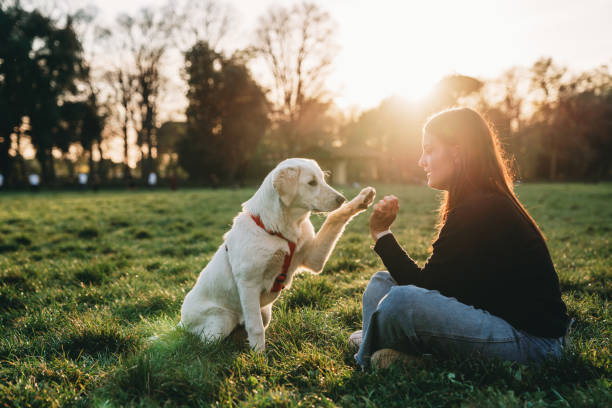The Importance and Benefits of Pet Training: A Comprehensive Guide.
Pet training is more than teaching tricks or obedience; it’s an essential component of responsible pet ownership that benefits both the animal and its human companions. From basic obedience commands to more complex behaviors, training plays a crucial role in the health and well-being of pets, as well as in the enrichment of the bond shared with them. This article explores why pet training is important and how to implement effective training methods.
Understanding the Importance of Pet Training:
Training is critical for several reasons:
1. Safety First:
Training your pet basic commands like “stay,” “come,” and “leave it” can prevent dangerous situations. For example, these commands can stop a pet from running into busy streets or ingesting harmful substances. Effective communication through training allows pet owners to manage their animals’ behaviors more effectively, ensuring their safety at all times.
2. Building a Strong Bond:
Training is an excellent way to strengthen the bond between you and your pet. It involves a lot of communication, mutual understanding, and time spent together, which enhances trust and companionship. Pets are social creatures, and they thrive on attention and interaction, which training regularly provides.
3. Socialization:
Training includes socialization, especially important for young pets. Proper socialization involves exposing them to a variety of people, animals, environments, and situations. This exposure helps them learn how to behave appropriately and reduces fear and aggression. A well-socialized pet is typically more confident, less anxious, and more well-behaved.
4. Preventing Behavioral Problems:
Many common behavioral problems, such as excessive barking, chewing, and aggression, can be managed or entirely avoided through regular training. Training provides mental stimulation, which can reduce boredom and destructive behavior. It also teaches pets appropriate ways to communicate their needs and desires, which can prevent frustration for both pets and owners.
5. Enhancing Quality of Life:
Training enhances a pet’s life by providing them with a sense of structure and purpose. It also helps them understand their boundaries within the home and in social situations, leading to a happier, more stress-free life.
How to Train Your Pet Effectively:
Effective training relies on consistency, patience, and understanding. Here are some foundational steps to successful pet training:
1. Start Early:
The best time to start training is when your pet is young. Puppies and kittens are more adaptable and learn quickly. However, it’s never too late to train an animal. Older pets can also learn new behaviors with the right approach.
2. Use Positive Reinforcement:
Positive reinforcement is one of the most effective training methods. This approach involves rewarding desired behaviors, which encourages the pet to repeat them. Rewards can be treats, praise, petting, or anything else the pet finds enjoyable.
3. Be Consistent:
Consistency is key in training. Use the same commands and reward system each time to avoid confusing your pet. Ensure all family members are on board with the training methods and commands to provide a unified learning experience for your pet.
4. Keep Training Sessions Short and Sweet:
Pets have short attention spans. Training sessions should be brief (5-15 minutes) and focused to keep them engaged and interested. Several short sessions throughout the day are often more effective than one long session.
5. Gradually Increase Difficulty:
Start with simple commands and gradually move to more complex tasks. This builds a foundation of understanding and allows pets to succeed step-by-step, which is important for their confidence and learning.
6. Address Individual Needs:
Every pet is different. Tailor your training methods to fit your pet’s personality and learning style. Some pets may respond well to loud, enthusiastic praise, while others may prefer quiet, calm affirmation.
Training Challenges and Solutions:
Despite best efforts, training can present challenges. Here are a few common issues and how to address them:
1. Inconsistency in Training:
Inconsistency can confuse pets. If different family members are using different commands or rules, the pet might not learn effectively. Solution: Hold a family meeting to unify training methods and rules.
2. Negative Reinforcement:
Negative reinforcement can lead to fear and distrust. Solution: Focus on positive reinforcement and consult a professional trainer or behaviorist if negative behaviors persist.
3. Lack of Time:
Many owners struggle to find time for regular training. Solution: Incorporate training into daily routines, such as during walks or mealtime.
Pet training is an integral part of pet ownership that significantly impacts the quality of life for both the pet and the owner. It ensures safety, aids in socialization, prevents behavioral problems, and enhances the human-animal bond. With the right approach and understanding, training can be a rewarding experience that fosters a loving, respectful relationship between pets and their families.
Through consistent, positive training, pets learn to navigate the complexities of human environments, leading to happier, more fulfilling lives together. Whether it’s a puppy learning to sit or an older cat learning to interact with a new pet, training is a lifelong process that enriches the relationship at every stage.
